Hiking with Dogs: Tips, Tricks and Breeds That Hike Best
Whether you’re new to hiking or an experienced outdoor enthusiast, you may appreciate some canine companionship when you hit the trails. Some dogs love this kind of activity as much as their humans do, while others would prefer to snuggle you on the couch once you get home.
Before you drag your current pet into the great outdoors—or adopt a new one that you hope will be up for adventure—it’s essential to consider whether a dog can match your own fitness levels and energy. And that’s just a starting point. Here, a breakdown of how to get started, what to watch out for on the trails, and the most appropriate breeds for bringing along on hikes
How to get started hiking with your dog
Hiking with your dog is not as simple as just taking them along—dogs are loyal to a fault and will often exert far beyond their healthy capabilities to keep up with their humans. But that doesn’t mean you can’t turn Fido into a trail veteran. Follow these tips before, during and after hitting the trail.
Visit your veterinarian

First things first: Talk to your vet about your dog’s physical condition and determine if they are suitable for hiking. Your veterinarian can also guide you on smart ways to gradually increase your dog’s activity level and inform you about any potential health issues to watch out for while on the trail.
Focus on conditioning and training
Begin with short walks or jogs to gradually increase your dog’s overall fitness level and ensure their obedience training and recall are reliable; it’s essential for their safety and the protection of other hikers and wildlife. Even if your dog is a great performer off-leash, you may want to consider always keeping yours on tether, in the event there’s a less-friendly dog or wildlife that may present a problem.
Find the right trail for your dog
It’s essential to find a trail that suits your and your pup’s needs and personality. First, choose trails suitable for your dog’s physical abilities. Dogs tend to do better on slopes than humans do, but less well in direct sun, for example, not only because the sun is hot but it can heat up the ground itself and burn sensitive paws. You’ll also want to check trail rules and regulations to ensure dogs are allowed or whether there is a leash requirement.
Some trails are also a better fit for more social dogs than others. Think about both the popularity and relative crowdedness and whether your dog will thrive with others around or do better on less traversed paths.
No matter the type of trail, your dog may ultimately be the judge of a trail’s worthiness. Are they happily trotting along, or stopping every few steps in protest of the incline or lack of shade? If they aren’t happy, it’s time to go home.
Use proper hiking equipment
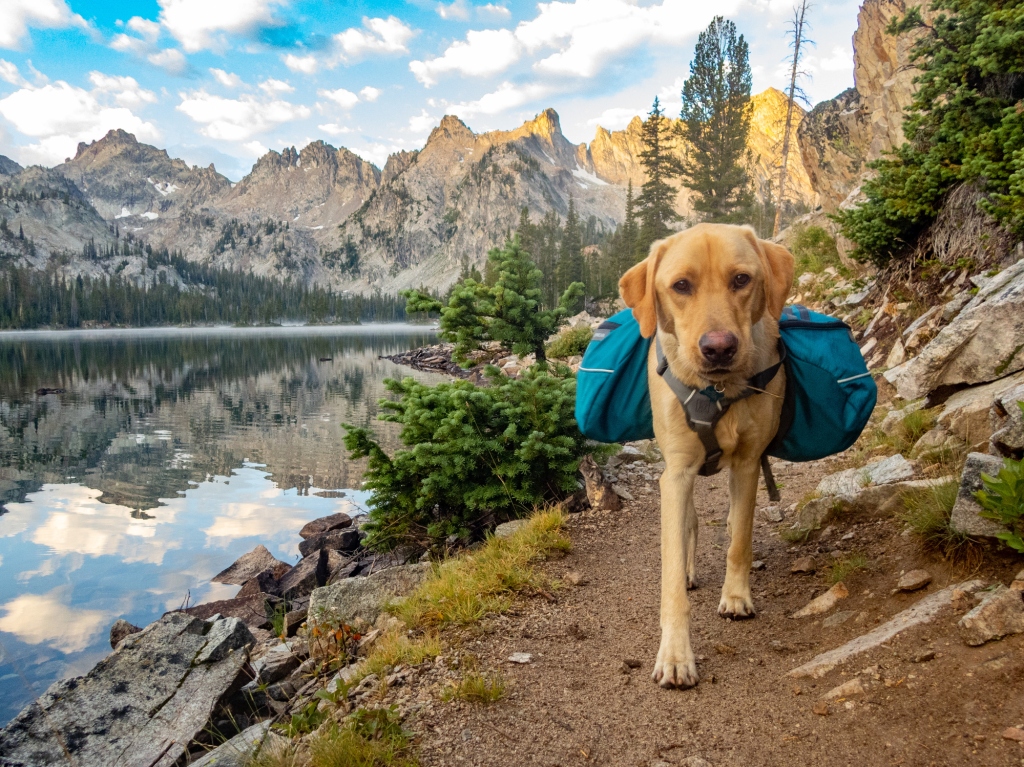
You’ll want to outfit your dog with a high-quality harness and leash. A harness rather than a collar offers better control of your pup and is more comfortable for them, while a leash that clips around your waist like a belt keeps your hands free but available to redirect your dog as needed. You’ll also want to pack a dog first-aid kit, a collapsible water bowl and plenty of water plus food or treats—and don’t forget waterproof bags for waste disposal. If your dog is big enough, you may consider having them carry some of their own gear in saddlebags, but again, you’ll want to train them on wearing it before a big hike. Finally, ensure your dog’s ID tags and microchips are up to date.
What to watch out for while hiking
Knowing potential hazards and taking the necessary precautions will ensure a safe and enjoyable hiking experience for you and your dog. Keep an eye out for these common challenges
Check weather conditions
Extreme heat, cold, or rapidly changing temperatures can harm your dog’s health—just like it would yours, if you didn’t dress or pack layers. Outfitting your pup with a cooling jacket or a trail-worthy coat is an option—just make sure you think of it before you set out. If terrain might be icy, snowy or muddy, you may even want to train your dog to walk in hiking shoes before you hit the trails.
Monitor your dog during the hike

Give your dog a thorough once-over after your hike or when you stop for water and rest on longer hikes. You’ll want to check for ticks, burrs or cuts along the trail, as well, before they have a chance to latch on, tangle deep into fur, or worsen. Finally, dogs don’t sweat like humans do and can quickly overheat, so stop often to provide water, rest breaks and shade for your pet. Hiking should be fulfilling and fun for you and your dog, so it’s essential to pay attention to their body language and stop or adjust your activities if your pet shows signs of discomfort.
Be aware of poisonous plants and wildlife
Be mindful of the local flora and fauna, and watch for things like poison ivy, oak and snakes, which can harm your dog. While a dog may not get an active rash from the saps of those plants, you could easily transfer sap to your own skin when petting them.
Leave it as you found it
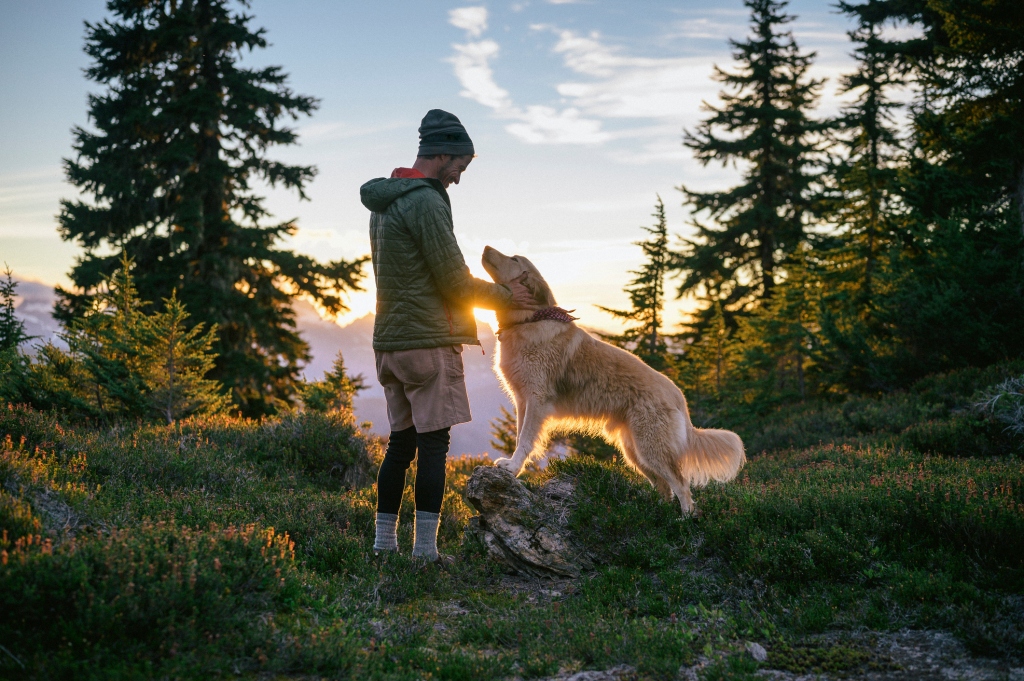
As you would any time you go into the wilderness, you’ll want to follow Leave No Trace principles for minimizing impact and preserving a pristine experience for others. That includes picking up after your pet when they go, just as you would in your own neighborhood.
The best dog breeds for hiking
Several dog breeds are a natural fit when it comes to hiking. However, potential owners should consider various factors, including a dog’s physical abilities and temperament, before deciding if an individual pub is suitable. Breeds with good hiking reputations include:
Siberian husky: The Siberian husky was bred initially in northeastern Asia to aid with sled pulling in Siberia, making it a natural choice for colder climate hikes like a snowy mountain trail. These athletic dogs also have incredible stamina and endurance. That said, huskies can present a challenge regarding obedience training, so be sure yours responds well to recall commands.
Border collie: Athletic, intelligent, and eager to learn, the border collie is an ideal choice for anyone looking to push their hiking game. These dogs do well with long-distance and frequent hikes thanks to their high energy levels and adaptability to various environments. They’ve even been known to run marathons alongside their two-legged partners!
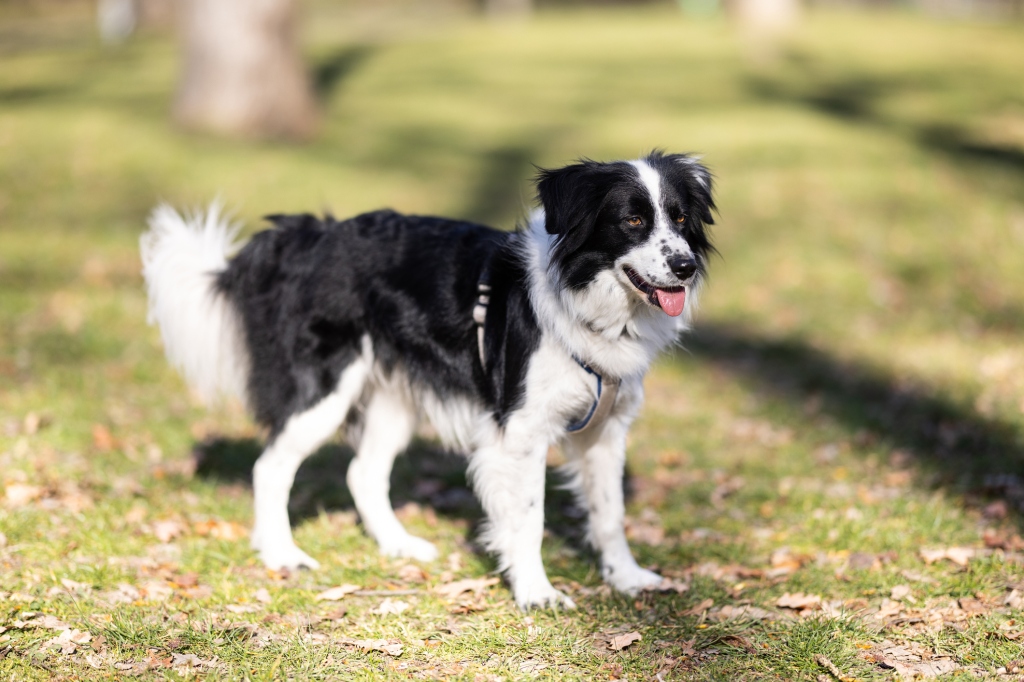
Australian shepherd: Australian shepherds are brilliant and versatile dogs. They’re known for herding instinct and agility, which can come in handy if you expect your dog to navigate challenging terrain. These loyal and energetic companions will enjoy new adventures who crave plenty of exercise, so hiking may be a natural fit.
Bernese mountain dog: These gentle giants were bred to work in the mountainous regions of Switzerland. Their large size, strength and steady temperament make them well-suited for hiking on challenging terrain. Although they may not have the speed or agility of other breeds, their endurance and ability to navigate rocky paths make them reliable hiking companions. Due to their thick coats, Bernese mountain dogs may become overheated in warm temperatures, so they’re best for cooler climates or hiking during the fall and winter months.
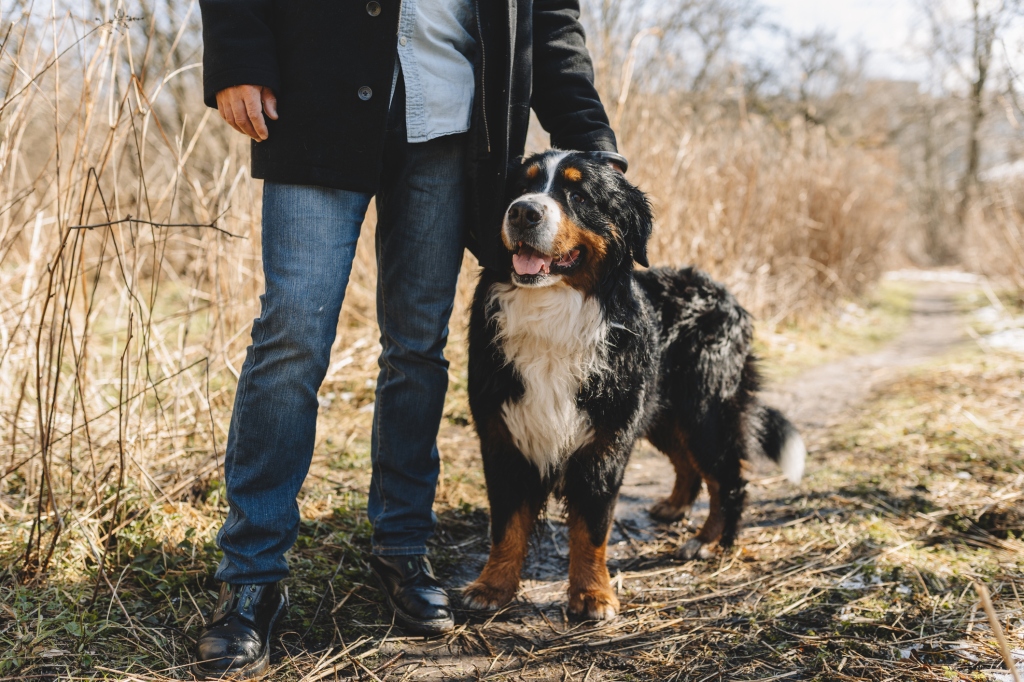
Golden retrievers: Retrievers, the third-ranked dog of the American Kennel Club most popular breeds in America, have a strong bond with humans and respond well to commands. This, paired with their desire for an active lifestyle, make them an ideal choice for a hiking companion. They also love to swim, so if your trails include ponds or lakes, they’ll be happy to take a dip with you.
German shorthaired pointer: This breed is known for its impressive stamina, athleticism and intelligence. This energetic breed thrives in nature and does well on long hikes, seeing as how they’re bred for hunting and upland game pursuits. The dogs’ strong instincts and skills are ideal for those planning challenging hikes in varied environments.
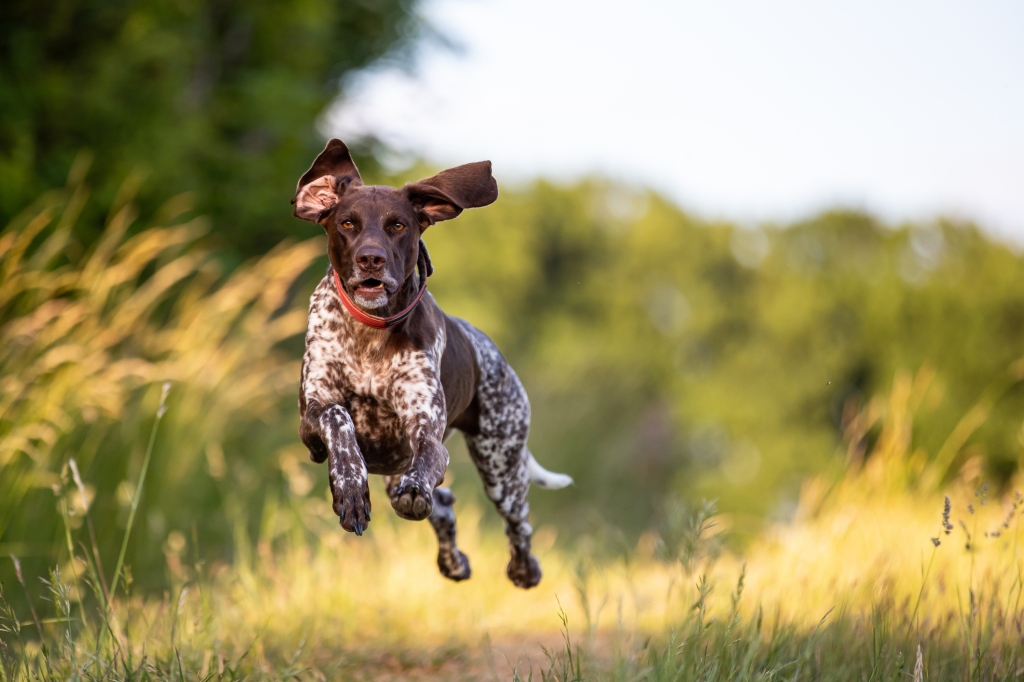
Jack Russell terrier: The smallest dog breed on this list, the Jack Russell packs a lot of energy and endurance into its compact frame. These agile dogs are capable of navigating rough terrain with ease, and their bold and fearless temperament makes them great hiking companions. Still, you’ll want to ensure your little adventurer is well-trained and socialized to avoid conflicts with other dogs or wildlife.






